Demineralised process water treatment in industry and in the medical environment
Demineralised process water treatment
Companies from all sectors of the manufacturing industry require customized systems for producing various qualities of process water. These are indispensable given the specific requirements of the processes to conserve the precious resource of water and to safeguard economic interests. It is crucial to analyze the individual processes in detail and consider the associated different requirements for the quality of the process water used to achieve optimal process water treatment.
The term VE water stands for “fully demineralized water.” Different degrees of purity can be distinguished. The product obtained through the reverse osmosis process is called permeate. In this process, pretreated water is pressed through a fine-pored membrane under high pressure and largely freed from ionic contents. Through additional treatment processes such as electrodeionization (EDI) or the use of mixed bed resins, the so-called diluate can be produced, a low-salt or low-ion solution with a residual conductivity of less than 0.2 µS/cm.
A VE process water treatment always includes various treatment stages. The selection of appropriate methods depends on the desired water quality and the quality of the feed water. Another consideration is the optimization of process combinations to maximize water utilization while minimizing wastewater quantities and reducing the use of chemical auxiliaries to a minimum.
Recovery processes are also gaining importance. An example of this is the recovery of copper and nickel from process wastewater, for instance, from printed circuit board manufacturing and conventional surface finishing. These metals are separated with a purity of over 95% through optimized rinsing processes, selective ion exchangers, and high-performance electrolyses, and can be reintegrated into the value creation cycle.
Regardless of the application, whether it is the consumption of food, the intake of medication, the operation of a vehicle, or the use of electronic devices such as mobile phones and laptops, we are surrounded daily by a multitude of things whose production or availability would not be possible without water and its proper treatment.
Water is by no means just water, and the composition of the feed water as well as the desired water quality for the respective process have various causes. Therefore, each water treatment must be individually planned, taking into account the initial situation and the desired goals. The combination of the various methods requires technical expertise and enables the optimization of resource use as well as the maximum availability of the treatment technology and thus the production capacities in a variety of applications.
Biological indicators for self-monitoring of sterilizers/autoclaves
For these reasons, the testing and associated validation of autoclaves in healthcare facilities is regulated by various standards:
- EN ISO 17665-1:2006-11: This international standard defines the “Sterilization of health care products – Moist heat – Part 1: Requirements for the development, validation and routine control of a sterilization process for medical devices”. This standard is the successor to the following standard DIN EN 554 (58946-6) and represents the state of the art with regard to sterilization processes using moist heat for medical devices.
- DIN EN 554: This standard specifies the “Sterilization of medical devices – Validation and routine monitoring for sterilization with moist heat”. Its primary purpose is to ensure the quality of sterilization.
- DIN 58946-7:2014-01: This standard regulates the “structural requirements and requirements for the equipment and operation of steam sterilizers in healthcare”.
- DIN EN 285:2016-05: This standard for “Sterilization – Steam sterilizers – Large sterilizers” defines the essential performance requirements including the associated test procedures.
- EN ISO 15883: This standard is a general “series of standards for cleaning and disinfection devices” that refers to the device requirements and the validation of the processes for reprocessing.
The use of indicators should help to ensure the biological safety of your devices. They are also available as a complete set in the sterilization box (HyMo-Box) (Art. No. 896006).
Consulting - advice and support with expertise
For decades, we at HeylNeomeris have been working in the field of process water treatment. This involves the ingredients and their effects in water.
- We analyze
- We evaluate
- We document
- We argue (from a technical to a business management perspective)
- We find/develop effective solutions
- We provide recommendations for action
- We support your tendering process
- We check the technical accuracy of the offers
- We conduct and accompany the technical discussions
- And last but not least, we validate the process
We not only have the expertise in theory, but also ensure the desired end result with our extensive practical experience.
HyMo-Box Sterilisation Check
In accordance with the standard DIN EN ISO 17665 and the European Pharmacopoeia, our HyMo-Box enables you to carry out microbiological validation and routine checks of your steam sterilizers.
Contents of the HyMo-Box Sterilisation Check:
- 20 Rodac plates for examining surfaces
- 2 biological indicators with spores of the test germ “Geobacillus stearothermophilus”
- 1 transport control of the bioindicator
- 1 waterproof pen
- 1 bottle of hand sanitizer
- 1 cooling element
- Step-by-step instructions
- Sampling plan
The HyMo-Box contains everything you need for a reliable check. It helps you to ensure the quality and safety of your sterilization processes.
NeoTecMaster® – 5 inch
Our 4- or 8-channel system enables the processing of up to 4 or 8 measurement signals. 4-20 mA / RS232 and Modbus RTU are available as signal inputs.
Advantages of the NeoTecMaster®:
- Easy operation
- Integration of Testomat devices
- Integration into the existing control cabinet
- Functional scope: Modularly expandable through NeoTec slave modules (measurement, control, regulation)
- Available as a built-in or surface-mounted version
The data received is visualized and displayed as a trend. The modular expansion with optional modules, also called slaves, makes it possible to implement common control concepts. Alternatively, we also offer the NeoTecMaster in a housing.
Neomeris PPM 150 Portable Photometer with USB interface
Technical details of the PPM 150:
- Dimensions: 450 x 360 x 110 mm
- Weight: 2.200 kg
- Measuring parameters: water constituents (e.g. silicon dioxide SiO2)
- measuring range: 0.05 – 25° dH (corresponds to 0.89 – 448 ppm)
- Area of application: Universal for water treatment
- Languages: Menu navigation in German and English
The device offers some advanced features:
- Flexibility: Compatible with many reagents from different manufacturers.
- Documentation: software for creating calibration curves and for data recording
- Internal memory: Stores up to 150 calibration curves and up to 1,000 data records
- USB interface: cable-based data transfer between photometer and PC/laptop.
- Pre-parameterized: With measurement curves for various parameters (for further information, please visit our online shop).
The photometer is supplied as a set in a case and includes:
- Multiparameter portable photometer PPM150
- Light shaft to prevent extraneous light from entering
- 5 cuvettes
- Mini USB to USB cable
- Mini USB interface
- Software
The Neomeris PPM150 is an analyzer that is reliable and requires little maintenance, helping to ensure your water quality.
Testomat® 808 SIO2 reagents
Silicate reagent A (article no. 141808), silicate reagent B (article no. 141809) and reagent A + B 100ml (article no. 140808) are specific reagents from Heyl that have been developed for the Testomat 808 SIO2. These reagents are required to measure and monitor the silicate content in water. Silicate monitoring is an essential aspect of process water treatment in hospitals to prevent deposits on equipment and medical devices and thus ensure the effectiveness of the water treatment system.
Regular monitoring of silicate levels is critical because excessive silicate deposits can affect the functionality of medical equipment and lead to increased maintenance costs. Accurate measurement of silicate levels ensures that water treatment is meeting the high standards required in medical facilities.
Seminar processing of sterile goods
At our seminars, you will learn everything you need to know about sterile processing at Heyl Neomeris. If you wish, the seminar can also be held at your premises.
Seven different topics are divided into blocks:
- Block 1: Process water treatment
- Block 2: Equipment technology in clinics
- Block 3: Instruments
- Block 4: Recognizing surface changes – causes and prevention
- Block 5: Sterile supply and instrument logistics in hospitals
- Block 6: Strengthening decision-making skills for managers
- Block 7: Regulations and prevention
The aim of the seminar is to achieve 100 percent media safety in process water treatment in order to ensure the optimal minimization of process risk for the treatment of medical devices.
Testomat® 808 SIO2
Technical details:
- Dimensions: W: 364 x H: 314 x L: 138 mm
- Weight: 4.35 kg
- Measurement parameters: silicon dioxide (SiO2)
- Measuring range: 0.3 – 1.2 ppm
- Area of application: sterilization in hospitals / silicate monitoring
- Power supply: Depending on the device version (24V / 115V / 230V, 50 – 60 Hz)
- Operating pressure: Depending on the device version: 0.3 – 1 bar or 1 – 4 bar
- Meets the requirements of the EN 285:2006 standard and the stricter limits set out in the DGSV guidelines
Testomat® 808 SiO2 allows the selection of 10 different limit values in the range of 0.3 to 1.2 ppm. It automatically monitors the silicon dioxide content in the water and thus contributes significantly to safety and efficiency in hospital sterilization.
Water treatment system as an under-counter system
Are you looking for a more compact version of the large modular water treatment system? If so, HeylNeomeris has the right solution for you. We also offer the water treatment system as an under-sink unit. The combination of proven processes and compact design enables the generation of up to 50 liters of deionized water per hour, with a minimal space requirement. Testomat 808 SiO2 is also included in this version. However, the silicate measuring device is not installed in the system but attached separately to the wall. A UV system and a pyrogen filter are also included when you purchase our system.
Dimensions of the system: W x D x H: 55 x 40 x 60 cm
You could easily fit the under-sink unit into a kitchenette because it can be made to look like a normal household appliance – visually rather small, but a real giant when it comes to purity.
In addition, our manufacturer-open multi-parameter system, the NeoTecMaster in the 5-inch version, can be configured to work with it. The system is pre-parameterized for the under-sink water treatment system.
Water treatment plant for outpatient clinics
Possible equipment of the system:
- Testomat 808 SiO2 silicate measuring instrument
- UV disinfection mini
- pyrogen filter
- Pumping system
- NeoTecMaster 5 inch (with casing)
- Inspection window
- Lighting
- Aqua-Stop
As a customer of our HeylNeomeris online shop, you can configure the water treatment system according to your requirements. We also offer a leasing model for the water treatment systems.





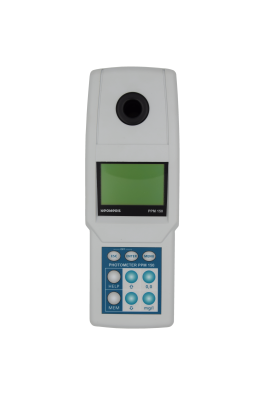
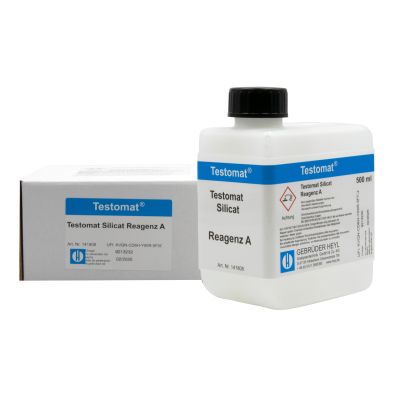
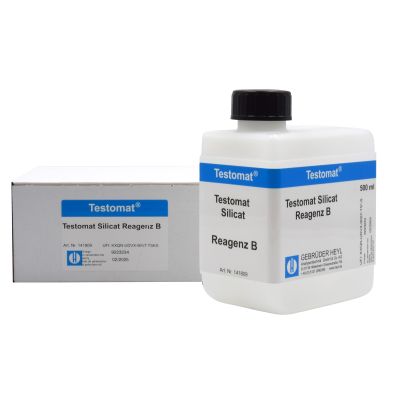
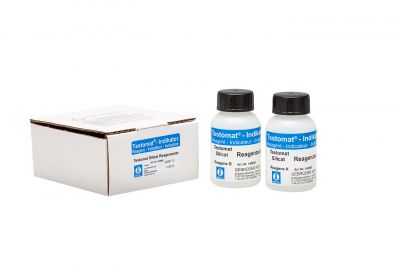
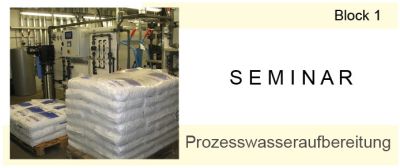

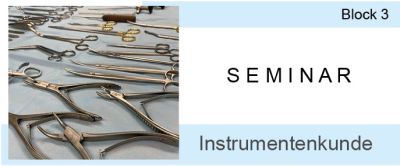

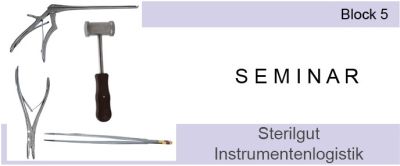
_400x400.jpg?ts=1736345790)



